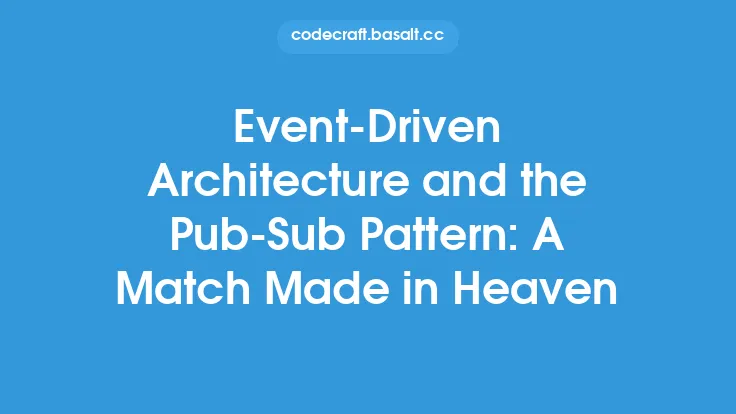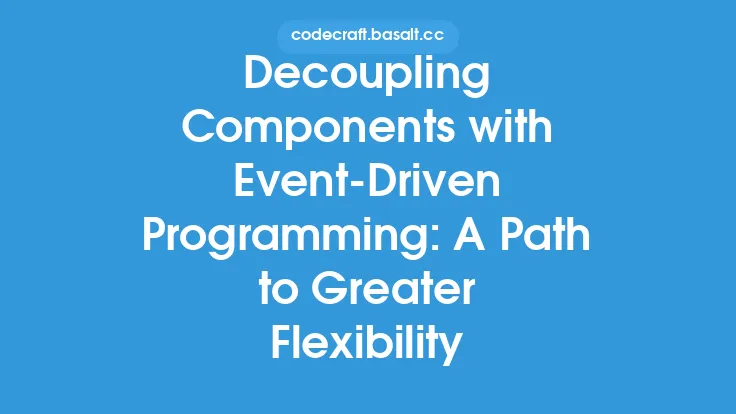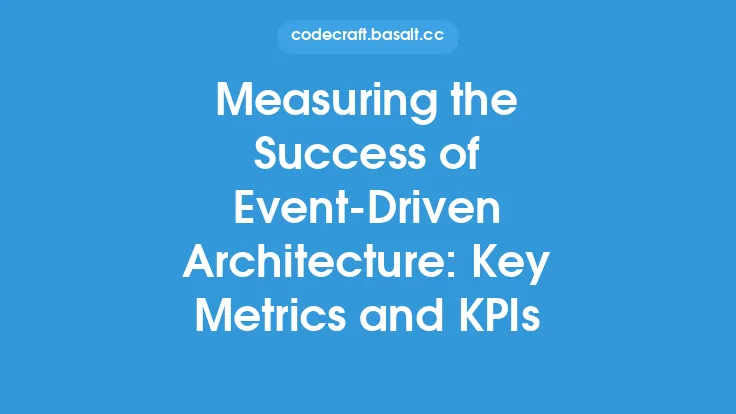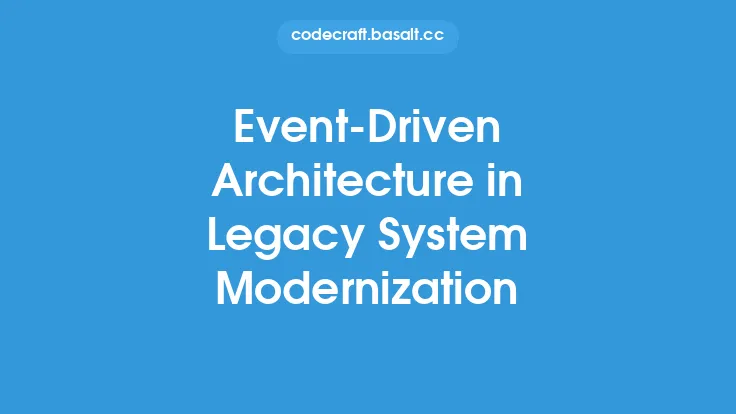Implementing an event-driven architecture (EDA) requires careful planning, design, and execution. It's a software architecture pattern that revolves around producing, processing, and reacting to events, which are significant changes in state or important milestones in a system. To successfully implement EDA, follow these steps:
Introduction to Event-Driven Architecture
Event-driven architecture is a design pattern that focuses on producing and handling events. An event is an occurrence that is significant to the system, such as a user placing an order or a payment being processed. The system is designed to respond to these events, which allows for loose coupling between components and greater scalability. In an EDA system, components communicate with each other by publishing and subscribing to events, rather than through direct requests.
Identifying Events and Event Producers
The first step in implementing EDA is to identify the events that will be produced and consumed by the system. Events can be anything from user interactions, such as clicking a button, to system-generated events, such as a payment being processed. Event producers are the components that generate these events, and they can be anything from user interfaces to backend services. It's essential to identify all the event producers in the system and determine the events they will produce.
Designing Event Consumers
Event consumers are the components that react to the events produced by event producers. They can be anything from backend services to user interfaces. When designing event consumers, it's essential to consider the following factors:
- What events will the consumer react to?
- How will the consumer process the event?
- What actions will the consumer take in response to the event?
- How will the consumer handle errors or exceptions?
Building an Event Bus
An event bus is a central component that allows event producers to publish events and event consumers to subscribe to them. The event bus can be implemented using a variety of technologies, such as message queues, streaming platforms, or even simple in-memory data structures. When building an event bus, consider the following factors:
- Scalability: The event bus should be able to handle a large volume of events without significant performance degradation.
- Reliability: The event bus should be able to guarantee delivery of events to consumers, even in the presence of failures.
- Flexibility: The event bus should be able to support a variety of event formats and protocols.
Implementing Event Serialization and Deserialization
Events need to be serialized and deserialized as they are published and consumed. Serialization is the process of converting an event into a format that can be written to a message queue or streamed over a network. Deserialization is the process of converting the serialized event back into its original form. When implementing event serialization and deserialization, consider the following factors:
- Data format: The data format used for serialization and deserialization should be efficient, flexible, and easy to use.
- Schema evolution: The system should be able to handle changes to the event schema over time, without breaking existing consumers.
Handling Event Versioning and Backward Compatibility
As the system evolves, event schemas may change, and new versions of events may be introduced. It's essential to handle event versioning and backward compatibility to ensure that existing consumers can continue to function correctly. When handling event versioning and backward compatibility, consider the following factors:
- Versioning strategy: The system should use a versioning strategy that allows for smooth evolution of event schemas over time.
- Backward compatibility: The system should be able to handle older versions of events, to ensure that existing consumers can continue to function correctly.
Testing and Validating Event-Driven Architecture
Testing and validating an EDA system is crucial to ensure that it functions correctly and meets the required specifications. When testing and validating an EDA system, consider the following factors:
- Unit testing: Individual components should be tested in isolation to ensure they function correctly.
- Integration testing: The system should be tested as a whole to ensure that components interact correctly.
- End-to-end testing: The system should be tested from end to end to ensure that it functions correctly in a real-world scenario.
Deploying and Monitoring Event-Driven Architecture
Once the EDA system is implemented and tested, it's essential to deploy and monitor it to ensure that it functions correctly in production. When deploying and monitoring an EDA system, consider the following factors:
- Deployment strategy: The system should be deployed using a strategy that minimizes downtime and ensures smooth rollout of new versions.
- Monitoring and logging: The system should be monitored and logged to ensure that any issues can be quickly identified and resolved.
- Performance optimization: The system should be optimized for performance to ensure that it can handle the required load and respond to events in a timely manner.
Conclusion
Implementing an event-driven architecture requires careful planning, design, and execution. By following the steps outlined in this article, developers can create a scalable, flexible, and maintainable system that can handle a wide range of events and respond to them in a timely and efficient manner. Remember to identify events and event producers, design event consumers, build an event bus, implement event serialization and deserialization, handle event versioning and backward compatibility, test and validate the system, and deploy and monitor it to ensure that it functions correctly in production.





